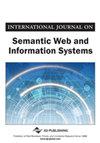英语语言文学模糊语义准确翻译的人工智能方法
IF 5.6
4区 计算机科学
Q2 COMPUTER SCIENCE, ARTIFICIAL INTELLIGENCE
International Journal on Semantic Web and Information Systems
Pub Date : 2023-09-27
DOI:10.4018/ijswis.331033
引用次数: 0
摘要
针对传统基于语法的翻译方法存在语义模糊、量词不准确、翻译精度低等缺点,提出了一种基于语义分析的英语模糊语义人工智能翻译方法。首先,从语言、知识、语用等不同语义层面对英语语言语义进行综合分析,找出模糊语义的关键点;然后,构建英语词汇和文献中模糊语义准确翻译的关键特征量,并利用人工智能方法对模糊语义进行优化。实验结果表明,该方法可以避免语义理解歧义,提高英语翻译的准确性。本文章由计算机程序翻译,如有差异,请以英文原文为准。
Artificial Intelligence Method for Accurate Translation of Fuzzy Semantics in English Language and Literature
In order to address the drawbacks of semantic ambiguity, inaccurate quantifiers, and low translation accuracy in traditional grammar-based translation methods, this paper proposes an artificial intelligence translation method based on semantic analysis for English fuzzy semantics. Firstly, a comprehensive analysis of English language semantics was carried out from different semantic levels such as language, knowledge, and pragmatics, and the key points of fuzzy semantics were identified. Then, key feature quantities for accurate translation of fuzzy semantics in English vocabulary and literature were constructed, and artificial intelligence methods were used to optimize fuzzy semantics. The experimental results show that the proposed method can avoid semantic understanding ambiguity and improve the accuracy of English language translation.
求助全文
通过发布文献求助,成功后即可免费获取论文全文。
去求助
来源期刊
CiteScore
6.20
自引率
12.50%
发文量
51
审稿时长
20 months
期刊介绍:
The International Journal on Semantic Web and Information Systems (IJSWIS) promotes a knowledge transfer channel where academics, practitioners, and researchers can discuss, analyze, criticize, synthesize, communicate, elaborate, and simplify the more-than-promising technology of the semantic Web in the context of information systems. The journal aims to establish value-adding knowledge transfer and personal development channels in three distinctive areas: academia, industry, and government.

 求助内容:
求助内容: 应助结果提醒方式:
应助结果提醒方式:


